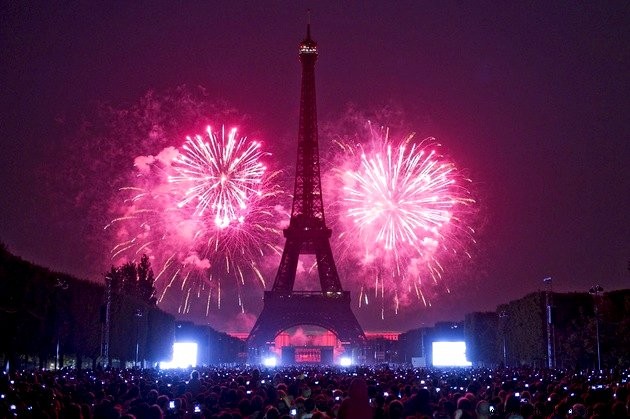The Bastillefall or Bastille Storming was the overthrow of the Bastille fortress-prison, by the people of Paris, on July 14, 1789.
This prison symbolized the absolutism and arbitrariness of French justice. His fall became a milestone for the French revolutionary process.
July 14th is celebrated as a national holiday in France.
Causes of the Fall of the Bastille

The causes that led to the fall of the Bastille have socio-economic roots.
The Third Estate (comprised of the bourgeoisie and the people in general) was marginalized. Despite holding economic power, they did not have the equivalent political representation in comparison to the First Estate (Clergy) and the Second Estate (Nobility). These last two had multiple privileges, such as multiple tax exemptions.
In addition, France faced economic problems exacerbated by French participation in the US War of Independence. Added to that are certain unpopular measures, such as raising the price of bread.
This generated a chain reaction throughout France, giving rise to an organized and armed popular movement, composed of the urban popular strata.
In the countryside, too, there was a large group of disaffected people who were characterized by revolutionary radicalization. All this led the population of Paris to revolt and invade the Bastille.
See also:Old RegimeFeatures of the Bastille
The Bastille was a rectangular fortress 90 meters long by 25 meters wide, with eight towers spread over the walls. These were up to 3 meters thick and 30 meters high.
There were still two drawbridges, surrounded by a deep moat and covered by the waters of the River Seine, which gave access to a pair of towers that guarded the eastern entrance to the city of Paris.
Internally, the Bastille consisted of three floors and a dungeon. On the upper floor, there were cells for the inmates and, on the ground floor, the common prison. In the basement, there were cells with only room to stand.
Historical Context of the Storming of the Bastille
Origin of the Bastille
The Bastion of Saint-Antoine, later called Bastille, was built in the context of the Hundred Years' War, by the monarch Charles V of France, in 1370. This medieval fortress was supposed to defend the entrance to the Saint Anthony district of Paris.
In the 15th century, the Bastille was turned into a prison and, in the 17th century, it was the destination of intellectuals and nobles who disagreed with the regime or were political opponents.
How was the Storming of the Bastille?
Therefore, in the 18th century, during the reign of Louis XVI (1754-1793), the agrarian crisis ruined the French economy, affecting mainly the peasants. Faced with this situation, the monarch convened the Assembly of the Estates General to pass laws that could lift the country out of economic stagnation.
As a reaction, the bourgeoisie, based on Enlightenment ideals, pressured the King to admit the creation of a National Constituent Assembly to design a French constitution.
This fact brought Paris to the brink of revolution, as Louis XVI rallied his troops to stifle the movement. However, the journalist Camille Desmoulins (1760-1794) warned the population about the imminent attack, which gave rise to the “Paris Militia”, formed mainly by guards, demobilized soldiers and the bourgeoisie.
Thus, they attacked the Hospital dos Invalidos, where they looted many weapons and left for the Bastille fortress on July 14, 1789, where the gunpowder and weapons were stored. The fortress was defended by 32 Swiss guards, local soldiers and three cannons.
The Marquis de Launay, director of the prison, had no choice but to negotiate with the movement's leaders. However, a shot fired by officers from the fortress started the shooting, which lasted a few hours, until Launay surrendered.
Consequently, he was captured and his head cut off and exposed. In total, one guard and less than a hundred revolutionaries died in the clash.
Following the attack, the Bastille was burned to ruins, and a few months later it was completely demolished.
See also:French Revolution (1789)Consequences of the Fall of the Bastille
With the fall of this prison, the changes that were underway were precipitated. The bourgeoisie realized that it had the people in its favor and started to use this support. Part of the clergy also adhered to the Third Estate.
In this way, both States allied themselves on June 20, 1789 and demanded the promulgation of a Constitution. This would limit the power of the King and absolutism would end in France.
After the Storming of the Bastille, the Paris Militia grew stronger and the population felt strong enough to make their own demands.
Later, the Revolution would become radicalized and go through a period of strong repression known as the Period of Terror.
See also:Terror in the French RevolutionNational Festival of France

The 14th of July was first celebrated in 1790, just a year after the Storming of the Bastille. On this occasion, the Feast of the Federation was celebrated, which would symbolize the union of the French.
During the Third Republic, in 1880, the 14th of July became a national holiday, at the suggestion of the deputy Benjamin Raspail (1823-1899). So as not to upset the Republicans or the Conservatives, there is no mention of whether they are celebrating Bastille or the Federation Feast.
On this day, there is traditionally a military parade in Paris and a large fireworks display.
Keep researching the topic:
- National Constituent Assembly in the French Revolution
- The Terror in the French Revolution
- French Republic
